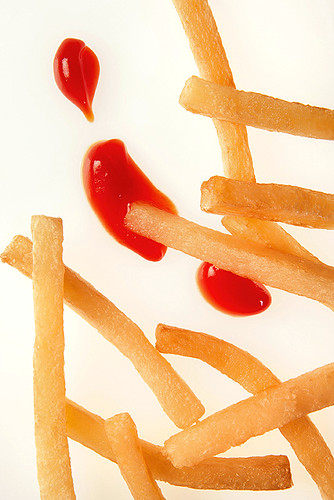This post is part of the Science Tuesday feature series on the USDA blog. Check back each week as we showcase stories and news from USDA's rich science and research portfolio.
Americans love, love, love their spuds: In 2010, per capita consumption of potatoes in the U.S. hit almost 114 pounds, according to USDA’s Economic Research Service. One of our favorite ways to dish up this versatile veggie is in the form of French fries.
Of course, deep-frying those potato slices to golden crispness adds extra calories from the oil. But what if you could indulge your French fry craving with fewer calories? And what if the technique to achieve that was more environmentally friendly than conventional fry preparation?
That’s not just some chef’s pipe dream; the scientists of the Agricultural Research Service (ARS) have cooked up a way to do it.
After the potatoes are peeled and sliced into strips, but before they’re dunked in the deep-fat fryer, the scientists prep them with three minutes of infrared (IR) heat. The IR preparation forms a nice, microscopic crust on the fries, which helps reduce their oil uptake.
In the ARS experiments, fries that were prepped with three minutes of IR heat at 120 kilowatts per square foot, then deep-fried at about 295 degrees Fahrenheit for seven minutes, had 37.1 percent less oil than fresh-cut fries that didn’t get the IR treatment.
As for the flavor of the finished product, more than half of 77 volunteer taste-testers said they found the taste and color of the IR-prepped fries to be no different from conventionally prepared fries. More than half of the panelists said they preferred the IR fries’ extra crispness.

The IR process is also suitable for fries that are partially processed at a potato processing plant, then frozen and shipped for later “finish-frying.” Those fries are typically blanched with hot water or steam to inactivate enzymes in the spuds that might otherwise cause undesirable browning.
The IR heating blanches the potato strips and gets rid of the unwanted enzymes without using water. That eliminates the need to air-dry the strips, so processors who opt for the IR method could reduce their water use and maybe their energy bills, too.
That means the IR fries could be good news for potato processors, the environment—and our waistlines!

